
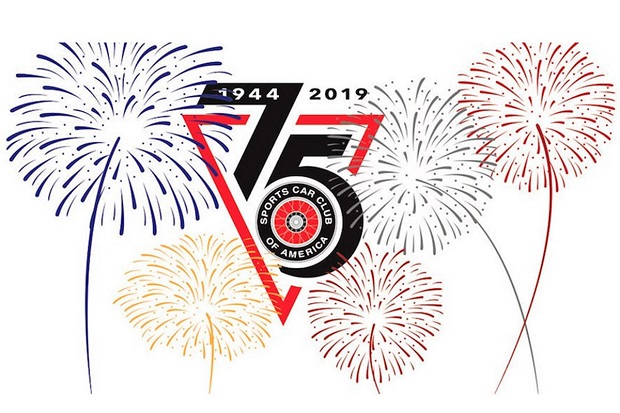
The end of February 2019 was the 75th Anniversary of the day seven car enthusiasts got together in the Boston, Mass home of Chapin Wallour. These men wanted to form an auto club dedicated to a relatively new type of car many were calling the “sports car.” Faster, nimbler, and lighter than the typical car of the age these sports cars were more thrilling to drive than most without being an “all out race car.” What came out of this meeting of the minds was the Sports Car Club of America (SCCA). We’re going to touch on some of the high points in the SCCA since then.
Club Grows from Seven Men to Tens of Thousands
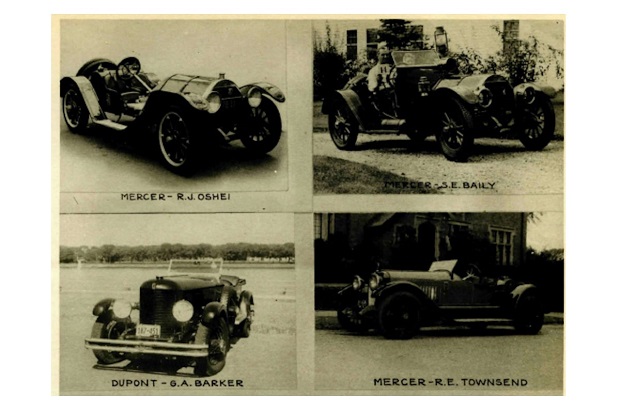
February 26, 1944 is the day the Sports Car Club of America was founded by seven men at 140 Mount Vernon Street in Boston. Theodore P. Robertson was elected president of the club with Chapin Wallour, whose home they were at being elected vice president. Everett M. Dickson became the club’s first secretary-treasurer. Today there are 67,500 members across the country, both men and women.
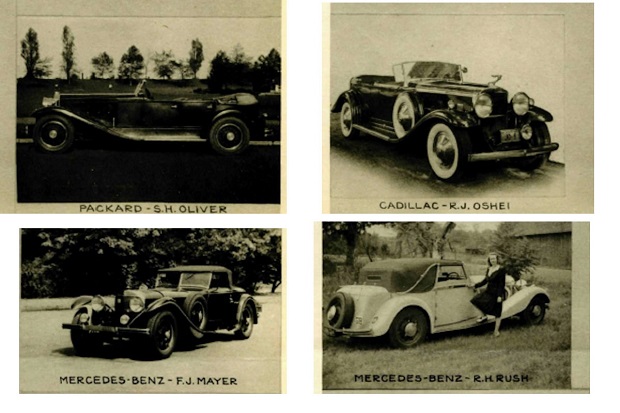
The club’s constitution gave the prime qualifier for club membership as ownership of a sports car. It also said that you could be ejected from the club if you voluntarily gave up ownership of your last sports car. Automatic dismissal would also occur if you sold your car to a non-member without first giving other members a chance to buy it.
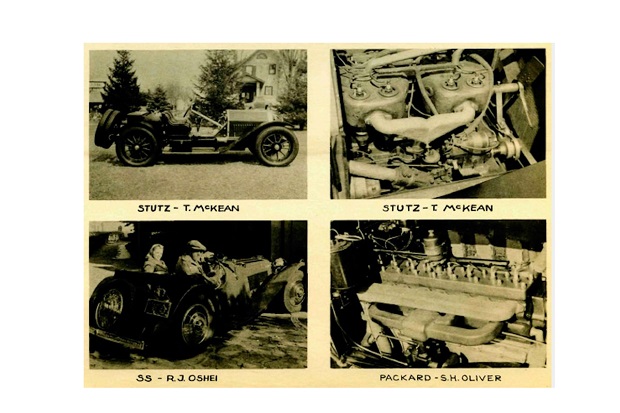
Early members owned cars such as a Biddle, a Bugatti, a Stutz, a Packard, and an Alfa Romeo. Legend has it the tires and wheels on Robertson’s Mercer were used as the basis for the club’s logo. Early on they realized they needed a club newsletter so the name The Sportwagen was chosen, Sportwagen appearing at the time to be the name that was most commonly used around the world for the sports cars they loved.
First Club Gatherings Are Purely Social Events
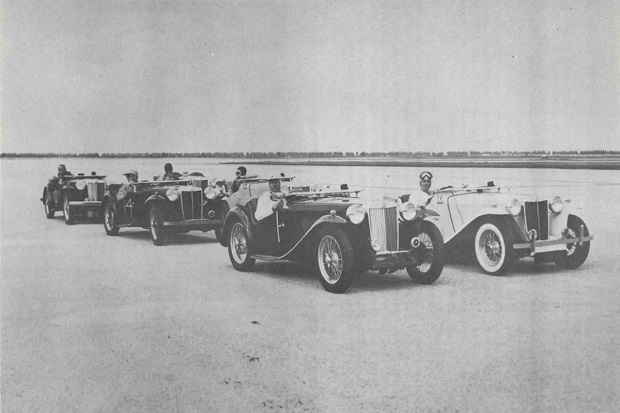
Available club records show that first few gatherings were purely social affairs (most likely due to fuel rationing) where members got together to talk about their cars and the goings-on in their lives (probably over a few drinks). The first recorded club event that involved members and their cars was the first weekend in May of 1944. Since the weather was nice, some members started calling around and arranging for members to meet at Wallour’s estate. They drove cross country to Charlie Fisher’s estate.
Bigger changes for the club were in store in 1945. The first of these was changing the name of the newsletter to SportsCar magazine, which hasn’t changed. The next big happening was the formation of a new chapter (the SCCA calls them “regions”) in Hartford, Conn. by Russ Sceli. Russ was appointed the first “Regional Executive” and was given authority of all club activities in his area.
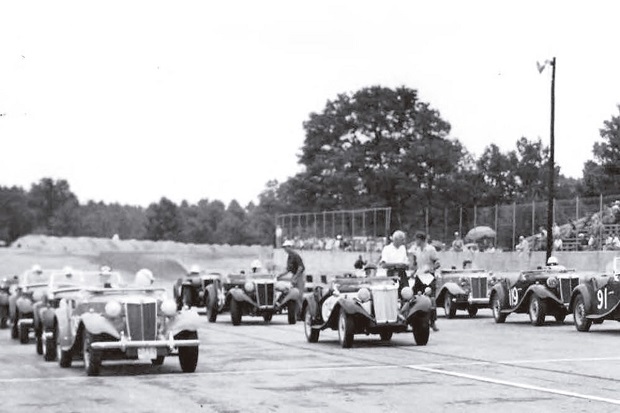
July 22nd saw members gather at Connecticut’s Thompson Speedway. The War in Europe had ended, and with it gas rationing, so the club was able to hold its first speed event. George Weaver’s Bugatti turned the fastest lap in both speed trial formats, the standing and flying start circuit of the track.
True Races Added to Club Schedule
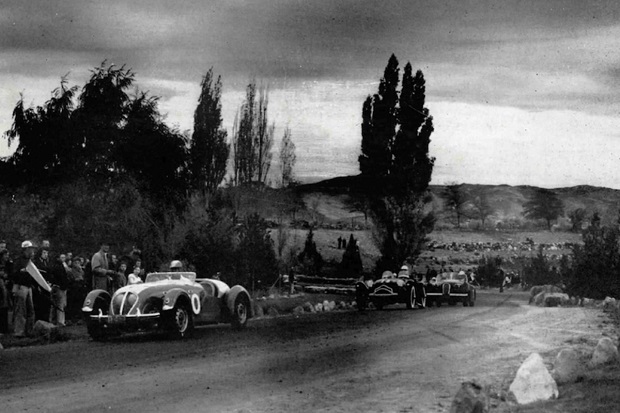
More speed events were added during 1947. Langhorne, Pa. was the site of the club’s first true race on June 22nd, with the SCCA race being a warmup for the AAA Big Car races scheduled for that afternoon. Eight cars, seven Mercers and one Mercedes made up the field for the five lap sprint race on the one mile dirt oval with about 35,000 people in attendance. Alec Ulmann and his Mercer won the race, giving fans a look at a type of race car that was new to most of them.
The largest time trial event up to then was held on July 26th back at Thompson Speedway. All cars made a variety of timed runs. Other challenges included a few two-car pursuits and handling challenges resembling gymkhana. The summer of 1947 also saw the beginning of single car timed hill climbs at the Fairfield Hillclimb, also in Connecticut.
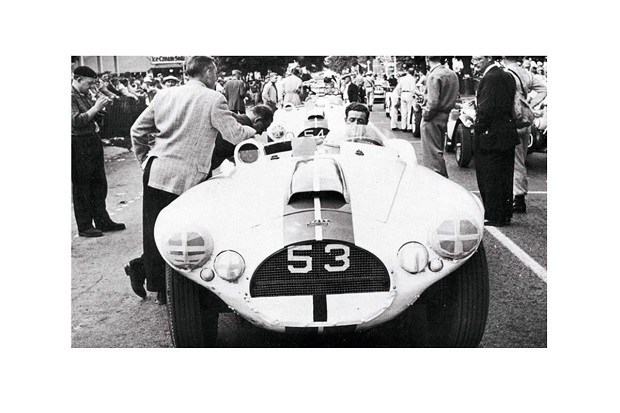
The club decided in 1948 to organize a “Grand Prix” for sports cars with the race taking place at Watkins Glen, NY. in October. The club appointed Cameron Argetsinger as the event’s General Chairman and Bill Milliken was named as the Chairman of the Technical Race Committee. It took months of preparation to lay out a course, but one was decided on starting out down the main street of the village and heading out through the local winding roads. The course also passed through the scenic gorge that gives the town its name. With an average speed of 63.7 MPH over the eight laps and 52 miles of the course, Frank Griswold won the main event in his Alfa Romeo.
First Championship Series Added to Club Schedule
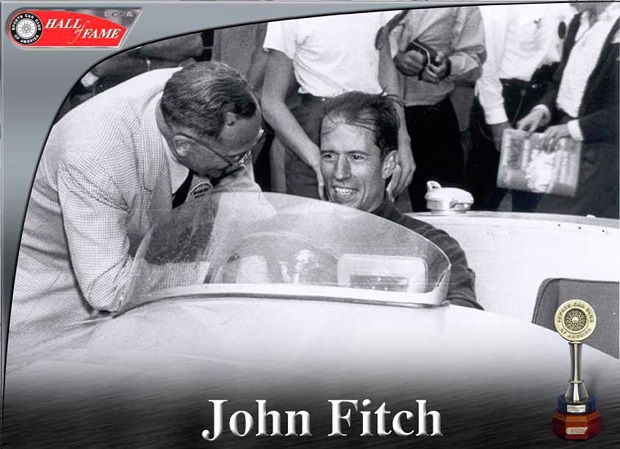
The club had enough of its membership competing in the races in the various regions that they decided in 1951 that it was time to create a national championship series. Members would compete for points at club events in any class throughout the country and earn points toward this championship. Points could be earned in time trials, hillclimbs, rally events, and races. This first championship was won by John Fitch.
The club schedule in 1951 included only road-racing track that was purpose-built as a road course. This was Thompson Speedway in CT. The layout of the track in 1951 was a half mile oval containing another quarter mile oval. First events at the speedway consisted of time trials of two laps on the larger outer oval followed by match races with four cars running clockwise around the outer oval and making a sharp turn onto the shorter inner oval, making ¾ of a lap and making another sharp turn to return to the outer oval. These sharp corners to and from the two ovals were quite challenging at speed and made the course something of a mini road course.
SCCA Races Outside the US for the First Time

In an event that most no longer remember, the SCCA held a single race in Argentina in 1951. Back then there was a burgeoning racing program that was recognized internationally in Argentina. Argentinian Juan Manuel Fangio was one of the top drivers of the time. The two top racing magazines of the era regularly published stories about the South American, and especially the Argentinian racing scene.
An invitation was sent by the Automovil Club Argentino to the SCCA president, asking the SCCA to send a team of drivers and cars to compete in a challenge race between Argentina and the US in Buenos Aires. Giving inspiration to this invitation was the fact that Argentina was hosting the Pan American Games that year. John Fitch won this race as well. Other SCCA drivers finished second, sixth, and seventh. This earliest of the club’s international expeditions strengthened the recognition of American sports car racers in general and the SCCA in particular as being world class caliber. Fitch went on to even greater international acclaim with fellow club member Briggs Cunningham, the maker of the first American cars to give the Europeans real competition at the highest levels.
SCCA Begins to Dominate Road Course Racing
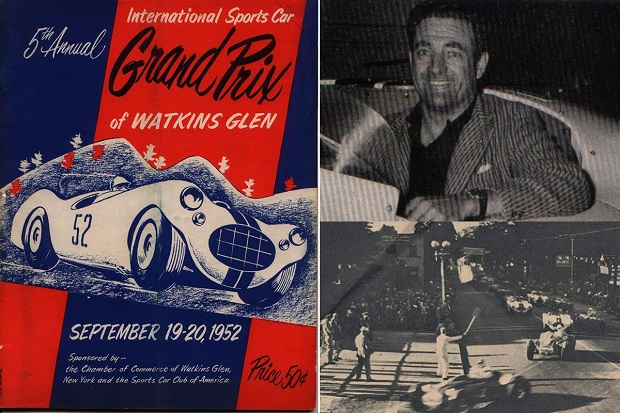
The race in Argentina solidified in the eyes of members that the club needed to expand in road courses. Road racing began to change for the club in 1952. This was when then club President Fred Wacker sideswiped the crowd during the Watkins Glen main event, severely injuring several people and killing a small boy. Obviously, racing on city streets was no longer viable; the club needed dedicated and permanent road racing facilities to continue.
The mid-50s saw the designs for the Road America and Watkins Glen Grand Prix Circuit got underway. Something was needed while those courses were built. In the interim, airports around the country allowed the club stay alive and to thrive and grow into the Sixties.
1954 saw enough racers and races for national championships to be awarded in each class. The main requirement for these championship titles was still that drivers had to travel to several different events around the country. The club also presented the first SCCA President’s Cup to Bill Spear in 1954. President Eisenhower awarded this inaugural award.

The requirement to compete all over the country was dropped in 1964 when the SCCA divided the country into divisions geographically. Drivers were only allowed to compete for points in their home region/division. Once a year the top drivers from all divisions got together to compete for an overall national title in an event that has become known as the SCCA National Championship Runoffs.
SCCA Tries to Adhere to Strictly Amateur Policy and Fails

The SCCA was founded as an amateur automotive organization. The club’s constitution called for members to be expelled if they ran events professionally, for money. At this same time (the mid to late 50s into the early 60s) more and more racing organizations were hosting professional races. Some members of the SCCA Board of Governors wanted to be able to compete professionally while a more conservative group wanted to maintain the amateur policy, leading to 1961 being a very divisive year.
The Board ended up voting that year to allow SCCA members to compete for money. The next year (1962) the Board even began sanctioning professional SCCA events. Taking a further step, the United States Road Racing Championship (USRRC) series was created in 1963. The Trans-American Championship (Trans-Am) series and the Canadian-American Challenge Cup (Can-Am) series came into being in 1966, and the SCCA Continental Championship series started up in 1967. This was the time that racing greats like Dan Gurney (who was ejected for racing for money in the 50s), Roger Penske, Phil Hill, and George Follmer got their starts.
Many SCCA Members Embrace Club’s Amateur Roots
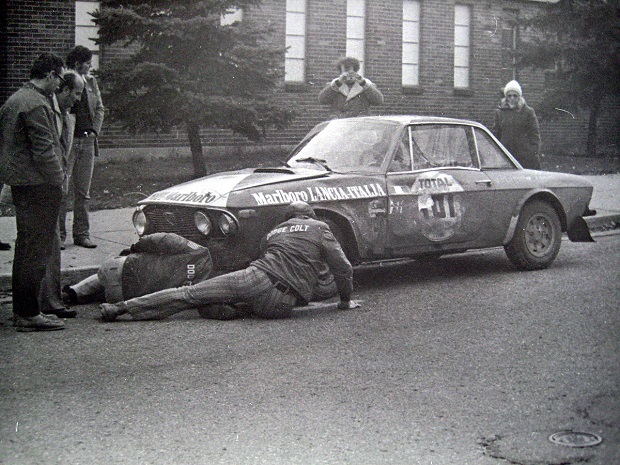
Although pros were now allowed, most SCCA members of the day elected to remain amateur, embracing their amateur roots. As previously mentioned, the SCCA’s first events were nothing more than a number of members gathering to drive their cars at legal speeds on public roads. These events evolved into RoadRally. This grew to be big enough by 1958 to deserve its own SCCA National Championship title.

Rally evolved over time into two competition types: Time-Speed Distance (TSD) evens run on public roads with drivers having to follow instructions that could be either simple or convoluted, depending on who set it up, and Performance Rally (Pro Rally), basically a race held on roads with limited access and rough terrain. The club’s longest-running rally event is the Press On Regardless (POR), an event that has been held since 1949 on some of northern Michigan’s most challenging roads. POR has been run as a TSD rally, an SCCA Pro Rally, and even an international rally challenge throughout its history. It was towards the end of the this part of the SCCA’s history (late 60s ) that my friend Frank Leary started his racing career as an amateur (later to turn pro) in the San Francisco Region.
SCCA’s Modern Era-70s to Present
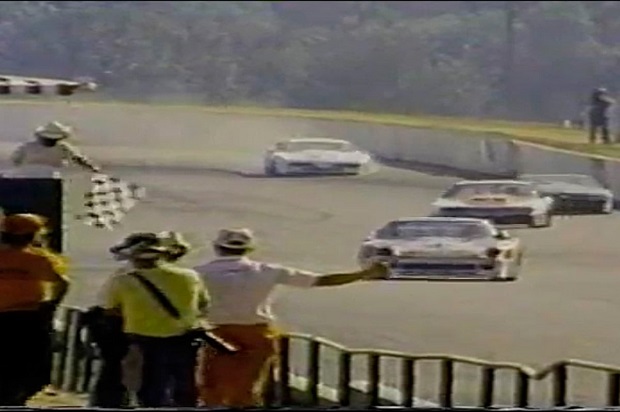
The early 70s was a tumultuous time for the SCCA, with major shakeups on the professional side. The cost of maintaining and racing the virtually-unlimited cars in the highly successful SCCA Pro Racing Can-Am series caused the series to fall on hard times. The SCCA discontinued the series in 1974, followed two years later by the Continental Championship. The only series to remain healthy through these years was the Trans Am series (Still running today although there was a three-year break), which was joined in 1984 by a series using production sedans known as World Challenge, and the Spec Renault series which was a new foray for the club with the club marketing its own race car. A Spec Racer Ford, which would soon become American racing history’s most popular race car that was purpose-built. More than 800 of them would be manufactured and raced.
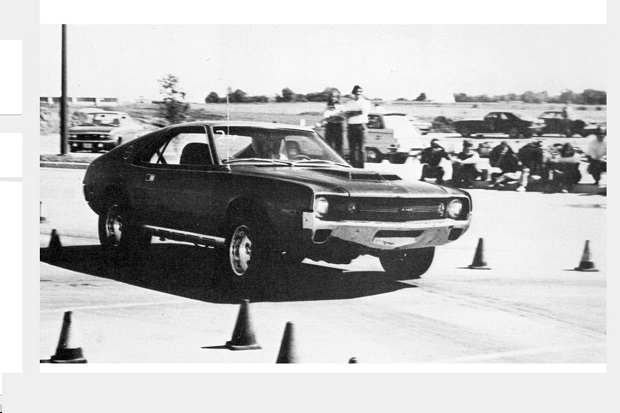
Safety and insurability concerns caused the cancellation of the Pro Rally series in 2004. Although it seemed there was a dark cloud over the club, the club also saw tremendous growth in membership numbers at both the Solo National Championships and the National Championship Runoffs. There was also the creation of SCCA Enterprises’ Formula Enterprises chassis.
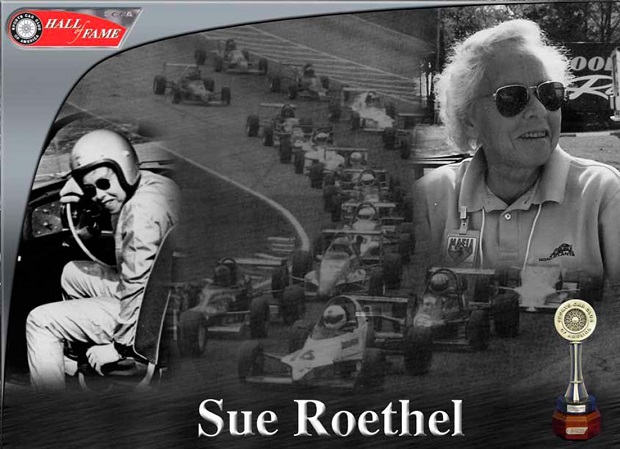
The club initiated the SCCA Hall of Fame in 2005, celebrating the club’s history and honoring those that have made a significant mark in the sports car world. There are a number of inductees whose names are familiar with almost everyone-Paul Newman, Roger Penske, Carroll Shelby, Dan Gurney, Skip Barber, and more.
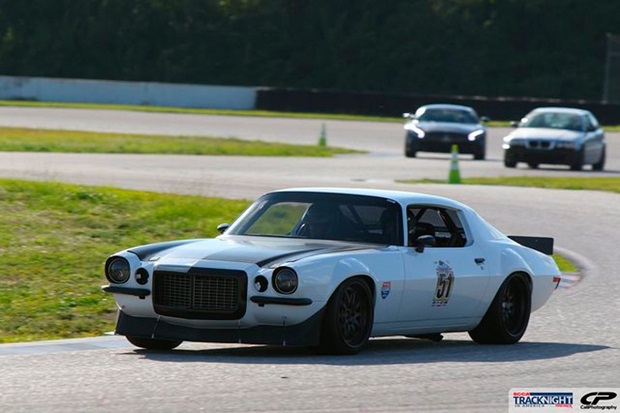
Both the amateur and professional sides of the SCCA are going strong today. Check out the site for races and other events near you or if you’re interested in joining or learning more about the Sports Car Club of America.


Leave a Reply